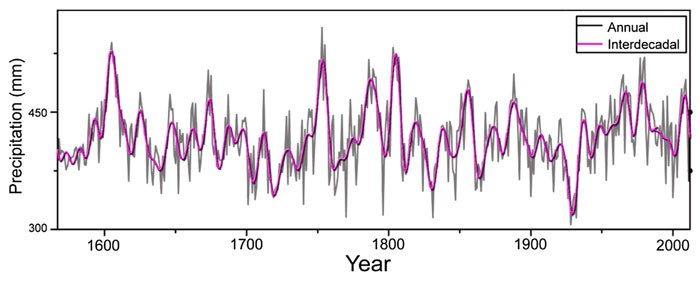From CO2Science: In the words of study authors Fang et al., “understanding long-term drought variations in the past can help to evaluate ongoing and future hydroclimate change in the arid western Chinese Loess Plateau (WCLP), a region with increasing demand for water resources due to the increasing population and socioeconomic activities.” Placing current drought within a longer historical perspective is also helpful in evaluating climate alarmist claims that contemporary drought events are becoming more frequent and/or severe because of CO2-induced global warming. And so it is that the work of Fang et al., who evaluated long-term drought trends in the WCLP, is important on many fronts.
Paper reviewed: Fang, K., Guo, Z., Chen, D., Linderholm, H.W., Li, J., Zhou, F., Guo, G., Dong, Z. and Li, Y. 2017. Drought variation of western Chinese Loess Plateau since 1568 and its linkages with droughts in western North America. Climate Dynamics 49: 3839-3580.
In creating their precipitation reconstruction, the authors utilized 401 tree-ring records collected at 8 sites in the WCLP. Ultimately, they were able to derive an annual precipitation proxy (from the previous August to the current July) that spanned the time period 1568 to 2012. That proxy is presented in Figure 1 below.
A simple examination of Figure 1 reveals that there is nothing unusual, unnatural or unprecedented about the most recent decades of the reconstruction, during which precipitation values fall well within the bounds of the natural variability that is observed for the rest of the record. But there have been episodes of extreme wet and dry years. For instance, extreme dry years were identified in 1770, 1796, 1831, 1928, 1929 and 1932. Extreme wet years, in contrast, occurred in 1603-1607, 1751, 1753, 1755, 1786, 1803-1805, 1807, 1977, 1979 and 1980. Wet epochs, defined as five or more consecutive years above 1 standard deviation in a low-pass filter of the data, were identified for the years 1601-1610, 1750-1756, 1783-1792, 1801-1808, 1853-1857, 1963-1967 and 1976-1981. Dry epochs (same as wet, but below 1 standard deviation) occurred during 1702-1707, 1716-1724, 1734-1737, 1827-1833, 1862-1866, and 1925-1933 -- the last of which period was the most severe of the entire record. According to Fang et al., this most recent severe drought “induced serious reduction[s] in food productivity causing a famine that killed about 2.5 to 3 million people.” However, the 1930s drought cannot have been caused by CO2-induced global warming, as it occurred well before the major build-up of greenhouse gases in the atmosphere and therefore must have been of natural origin.
Consequently, in light of the above, it would appear that rising greenhouse gases are having no discernible impact on precipitation in the WCLP, particularly so in the case of drought.



